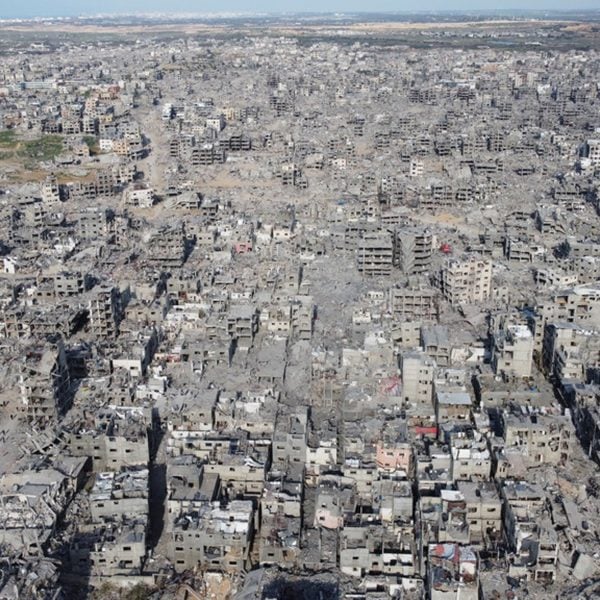At least 92 per cent of housing units in Gaza have been destroyed or damaged, according to data shared by the United Nations’ Office for the Coordination of Humanitarian Affairs.
The Office for the Coordination of Humanitarian Affairs (OCHA) published a reported impact snapshot on 14 January, which stated that 160,000 out of 436,000 housing units in Gaza had been destroyed and 276,000 had been damaged in the Israel-Gaza war.
OCHA sourced the data from Shelter Cluster, an organisation that coordinates humanitarian shelter in conflicts and disasters.
OCHA reports 69 per cent of all buildings destroyed or damaged
Displaced Gazans have begun to return to the Gaza Strip following Israel and Hamas agreeing to a ceasefire on 19 January, the first phase of which is planned to last six weeks. Three women hostages were released from Gaza and 90 Palestinians were released from jails in Israel as part of the agreement.
The recent war in Gaza was triggered on 7 October 2023 when Hamas militants attacked Israel, killing about 1,200 people and taking 251 hostages.
According to the latest figures from Palestine’s Hamas-run health ministry, 47,100 people have been killed in Gaza in Israel’s subsequent military campaign.
In addition to 92 per cent of housing destroyed or damaged in Gaza, OCHA also published in its report that 69 per cent of all structures are destroyed or damaged.
At least 88 per cent of school buildings have been damaged, according to the report, as well as 51 university buildings destroyed and 57 damaged.
“Closing the thermal envelope” immediate priority
Yesterday, Shelter Cluster published guidance for Gazans returning to damaged homes, which stated sealing the building envelope should be the immediate priority.
“Given the scale of shelter needs across Gaza and the limited resources available, repair of damaged dwellings should prioritise closing the thermal envelope of essential habitable spaces in accordance with family size and, where feasible, restoring basic household water and sanitation services,” said the organisation.
“The Shelter Cluster does not recommend high-cost permanent repairs at this stage, as most of the population lacks access to even the most basic shelter assistance, such as tents or tarpaulins.”
“Due to ongoing military operations and limited humanitarian access in Gaza, conducting damage assessments in safe conditions remains a significant challenge,” it continued. “The presence of EOs (explosive ordinance) and debris and the recurrence of damage to previously assessed areas make it difficult to have a map of ‘cleared to work’ buildings.”
Photo by Mahmoud İsleem via Anadolu.
Comments have been turned off on this story due to the sensitive nature of the subject matter.

